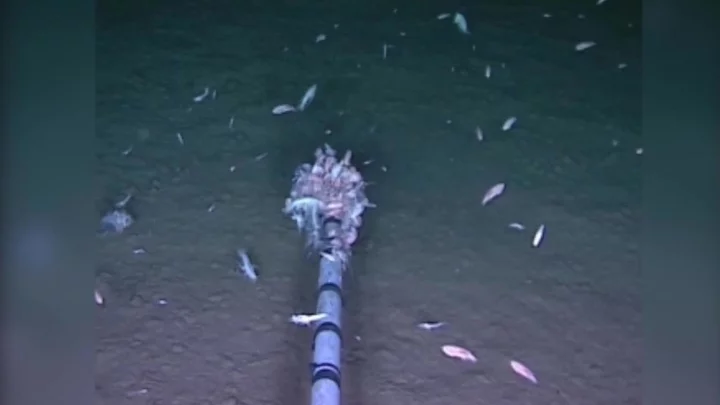Scientists have discovered a new virus in the Pacific that is thought to be the deepest ever found in Earth’s oceans.
The so-called bacteriophage virus infects and replicates inside bacteria, and was found in the Mariana Trench, which is the Pacific’s deepest point.
Bacteriophages are among the world’s most abundant life forms, and are important for regulating population sizes in the oceans and releasing nutrients.
This one, the catchily named vB_HmeY_H4907, was picked up at 8,900 metres below sea level. That is still some way off the 11,000 metre floor of the trench.
Min Wang, a marine virologist from the Ocean University of China, said: “To our best knowledge, this is the deepest known isolated phage in the global ocean.”
“Wherever there’s life, you can bet there are regulators at work. Viruses, in this case.”
Scientists think this virus is likely to be distributed widely in the world’s oceans, despite the fact it has only been discovered.
It has a similar structure to its host bacteria group halomonas. These are usually found in sediments and geyser-like openings on the seafloor.
They also think the virus is lysogenic, which means it infects the host but does not kill it.
Dr Wang said the discovery could inform further research about how viruses survive in the world’s harshest environments.
“Extreme environments offer optimal prospects for unearthing novel viruses,” he added.
The virus was found in the so-called hadal zone, which the study’s authors said is “the planet’s least explored and most mysterious environment, and it is the deepest habitat for life on Earth’s surface”.
The area is named after Hades, the Greek god of the underworld.
Researchers wrote in the study: “These findings expand our understanding of the phylogenetic diversity and genomic features of hadal lysogenic phages, provide essential information for further studies of phage-host interactions and evolution, and may reveal new insights into the lysogenic lifestyles of viruses inhabiting the hadal ocean.”
The findings were published in the journal Microbiology Spectrum.
Sign up to our free Indy100 weekly newsletter
Have your say in our news democracy. Click the upvote icon at the top of the page to help raise this article through the indy100 rankings.









